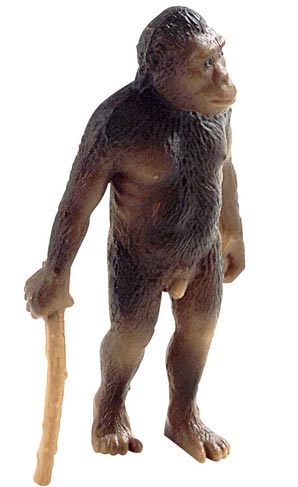Lucy’s Legacy – The Hidden Treasures of Ethiopia
Yesterday we wrote about the fascinating early hominid fossil skeleton of Lucy (Australopithecus afarensis), known to scientists by the fossil number A.L. 288. This 3.2 million-year-old fossil is part of an exhibit currently being held at the Pacific Science Centre in Seattle in the U.S. state of Washington.
Australopithecus afarensis
Lucy is perhaps the most famous fossil hominid, about 40% of the fossil was found and it is believed to represent a female that stood 107 cm tall and importantly, walked upright. So far, A. afarensis fossils have only been found in Ethiopia and Tanzania. Early hominid fossils are extremely rare and it is likely that this particular species was quite widespread across central and east Africa. The large distance between the fossil sites has led scientists to deduce this.
The media team at the Pacific Science Centre have sent us over some more information and some exclusive pictures of the various exhibits. The exhibition’s full title is: Lucy’s Legacy: The Hidden Treasures of Ethiopia, and it showcases the evolution of human history from the very cradle of human existence (scientists believe that our species did evolve in Africa and that that hominids first evolved on that continent).
A Model of Australopithecus
To view replicas and figures of prehistoric animals: Bullyland Prehistoric Animal Models and Figures.
As well as getting the very rare chance to view some of the ancient fossils of hominids from Ethiopia, visitors have the opportunity to explore the rich history and culture of Lucy’s homeland – a story that dates back to 5 million years ago.
The exhibit is well worth a visit, the fossils rarely travel outside of Ethiopia and the range of cultural artefacts on display provide a fascinating insight into the story of our own species and the development of humankind.
Visit Everything Dinosaur’s website: Everything Dinosaur.







Leave A Comment